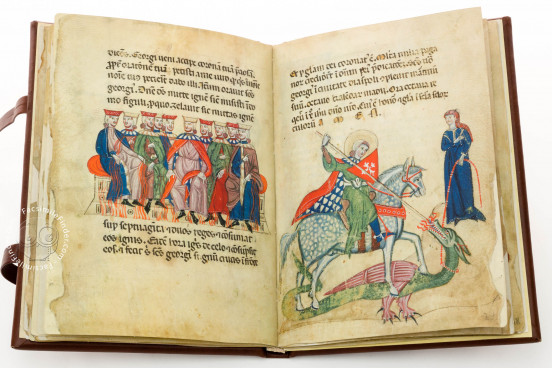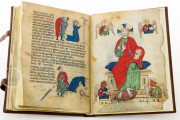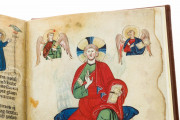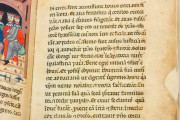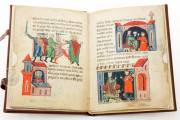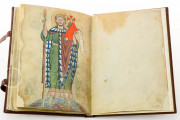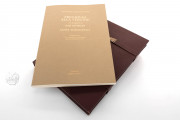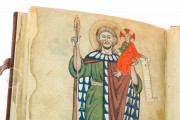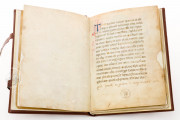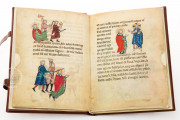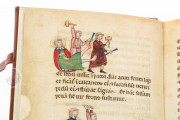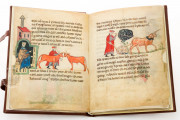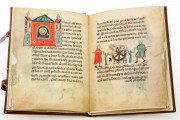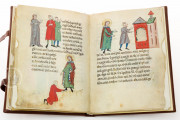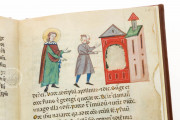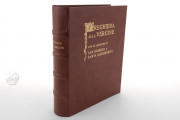Made in Verona in the second half of the thirteenth century, the Prayer to the Virgin is a richly illustrated manuscript probably personalized for a young woman of the Veronese aristocracy. With an elegant layout and wide margins, the manuscript boasts seventy-eight miniatures that illustrate the virtuous deeds and dramatic martyrdoms of Saint George of Cappadocia and Saint Margaret of Antioch. The codex closes with two full-page illuminations featuring Christ in Majesty and Saint Christopher (fols. 38r-v).
The manuscript commences with a prayer to the Virgin in the Veronese vernacular. The brief appeal is one of the oldest surviving examples documenting the regional dialect.
George, Margaret, and Their Dragons
The legend of the renowned military saint George begins as he declares his Christian faith to a certain Dadianus—identified as various Roman officials in the accounts of his life—thus beginning years of torture documented in the fifty-five miniatures dedicated to his narrative. The illumination closing his story illustrates his illustrious defeat of a dragon. The image is beautifully detailed with spots on George's horse, feathers on the dragon's wings, the embroidery of the saint's garments, and the gold banding on the leash by which a princess keeps the dragon tethered (fol. 26r).
In the manuscript, the story of Saint George is paired with that of another dragon-slayer, the young shepherdess Margaret. After rejecting the advances of the prefect Olybrius, Margaret was condemned as a rebel and subject to torture, which included being swallowed by Satan in the shape of a dragon. The gruesome details of her torture continue through to her final decapitation (fol. 37v).
Virtuous Narratives in Didactic Pictures
With capitals delicately touched in yellow, blue, and red, the text of the legends of Saints George and Margaret is written in Gothic Rotunda. The harmonious interplay of word and image demonstrates that the scribe and illuminator worked in close collaboration to achieve a continuous narrative that allowed the unframed miniatures to weave in and out of the text.
Religious Instruction for a Young Nun
An ownership inscription (fol. 3r) indicates that the manuscript was entrusted to the church of Santa Maria Maddalena di Campo Marzio in Verona by the mid-fourteenth century, at that time affiliated with the Franciscan nuns of Santa Maria delle Vergini. The establishment drew many children from families of the Veronese aristocracy destined for monastic life. Beginning with an intimate prayer to the Virgin in Veronese dialect, the codex thus provided a young noblewoman with spiritual models as she began her new life in the convent of the Poor Clares. The codex was eventually purchased for the Biblioteca Civica in 1881.
We have 1 facsimile edition of the manuscript "Prayer to the Virgin": Preghiera alla Vergine facsimile edition, published by Il Bulino, edizioni d'arte, 2006
Request Info / Price

